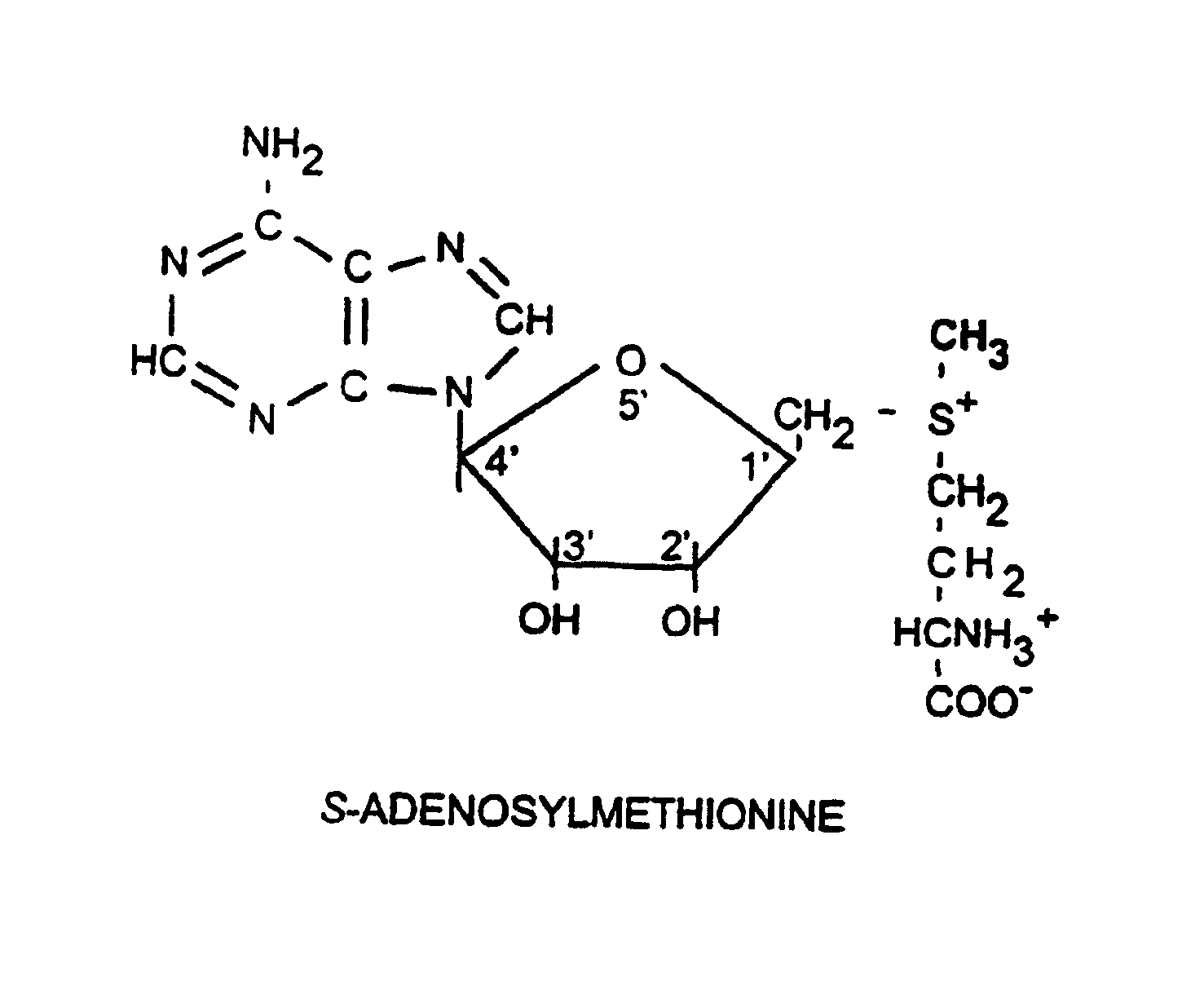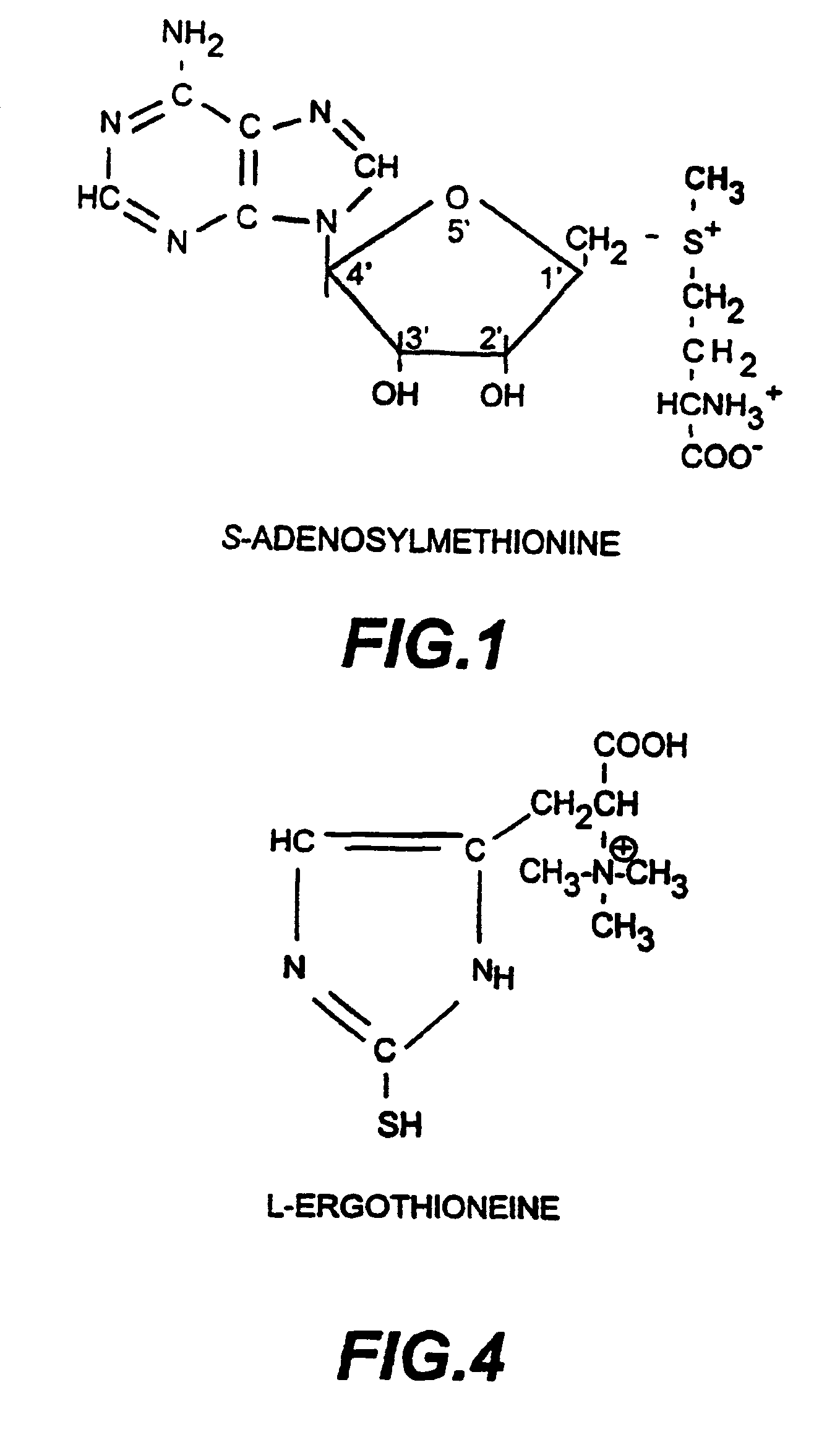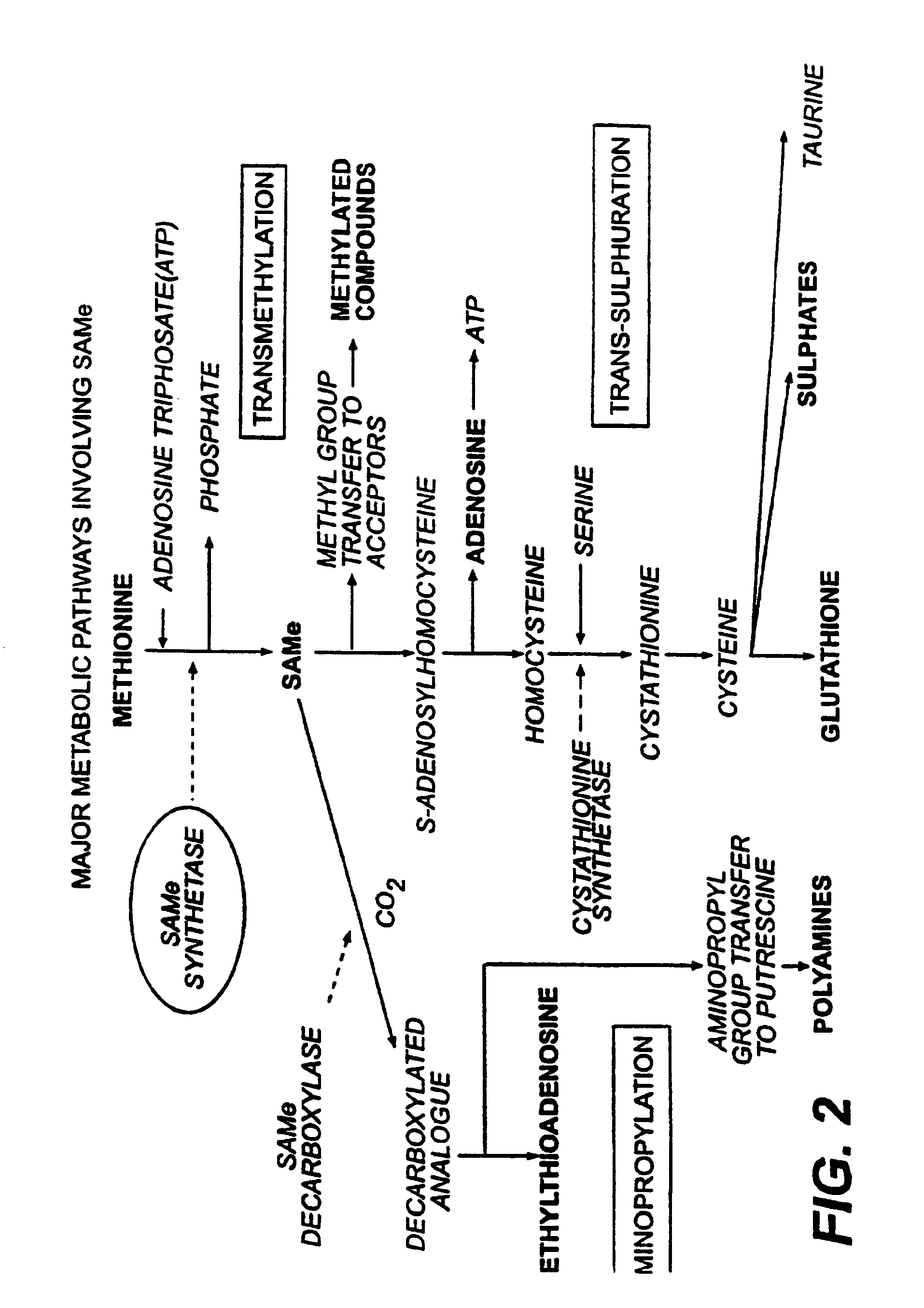L-ergothioneine, milk thistle, and S-adenosylmethionine for the prevention, treatment and repair of liver damage
a technology of s-adenosylmethionine and ergothioneine, which is applied in the directions of plant/algae/fungi/lichens, unknown materials, biocide, etc., can solve the problems of liver damage, liver blood pressure can damage liver tissue, and liver cells are quite vulnerable to blood-borne infectious agents such as viruses and bacteria
- Summary
- Abstract
- Description
- Claims
- Application Information
AI Technical Summary
Benefits of technology
Problems solved by technology
Method used
Image
Examples
example 1
A 10-year-old female spayed domestic cat is diagnosed with feline idiopathic hepatic lipidosis (fatty liver). This disease is characterized by the accumulation of triglycerides within the cytoplasm of liver cells. The cells become so swollen with lipids that they cease to function, and many die (hepatic necrosis). The cellular swelling also inhibits blood flow in hepatic sinusoids, compounding the damage with poor perfusion. Symptoms of the disease include loss of appetite, vomiting, depression and CNS signs (hepatic encephalopathy). Since the cause of this disease is unknown, it is currently treated symptomatically. Even with aggressive treatment, 40 to 50% of affected animals succumb. In this case, in addition to symptomatic treatment (tube feeding, fluids, pharmacologic control of vomiting), the patient is given daily a mixture of 100 mg SAMe, 100 mg silymarin, and 100 mg of L-ergothionine until appetite returns. The SAMe and silymarin support repair of damaged hepatocytes and th...
example 2
A farmer in Lancaster County, Pa., reports that one of his cows has died in convulsions and that several sheep and a pig in the same pasture are also sick. Poisoning by cocklebur plants (Xanthium strumarium) is diagnosed. In this condition, a toxin produced by the plant causes fatty change, swelling, and death in liver cells. Animals that survive the initial illness may develop chronic liver disease. Currently, the only method of treatment is removal of the plant from the diet. In this case, the pigs and sheep are removed from the pasture and administered daily SAMe (5 mg / kg), silymarin (40 mg / kg), and L-ergothioneine (100 mg per animal) for one to two weeks. The SAMe helps maintain cellular membranes and the Na / K / ATPase pump, which are the cellular organelles most likely to be damaged by the toxin. The silymarin stimulates synthesis of replacement proteins and the L-ergothioneine prevents reperfusion injury.
example 3
A 58-year-old man has osteoarthritis. To control the pain in his joints, he takes large amounts of the drug acetaminophen. Like many other drugs, acetaminophen can cause hepatic damage by decreasing glutathione levels. This patient wishes to continue to take acetaminophen, because nonsteroidal anti-inflammatory drugs cause unacceptable gastrointestinal irritation. In this case, the patient continues to take acetaminophen, but also takes SAMe 200 mg, and L-ergothioneine 100 mg daily as long as he continues to take acetaminophen. The SAMe increases hepatic glutathione levels, and the L-ergothioneine ensures maximum effect of the available glutathione via glutathione peroxidase activation. The net result is that liver structure and function are supported in the face of an ongoing potentially hepatotoxic exposure.
PUM
| Property | Measurement | Unit |
|---|---|---|
| Weight | aaaaa | aaaaa |
| Fraction | aaaaa | aaaaa |
| Fraction | aaaaa | aaaaa |
Abstract
Description
Claims
Application Information
 Login to View More
Login to View More - R&D
- Intellectual Property
- Life Sciences
- Materials
- Tech Scout
- Unparalleled Data Quality
- Higher Quality Content
- 60% Fewer Hallucinations
Browse by: Latest US Patents, China's latest patents, Technical Efficacy Thesaurus, Application Domain, Technology Topic, Popular Technical Reports.
© 2025 PatSnap. All rights reserved.Legal|Privacy policy|Modern Slavery Act Transparency Statement|Sitemap|About US| Contact US: help@patsnap.com



